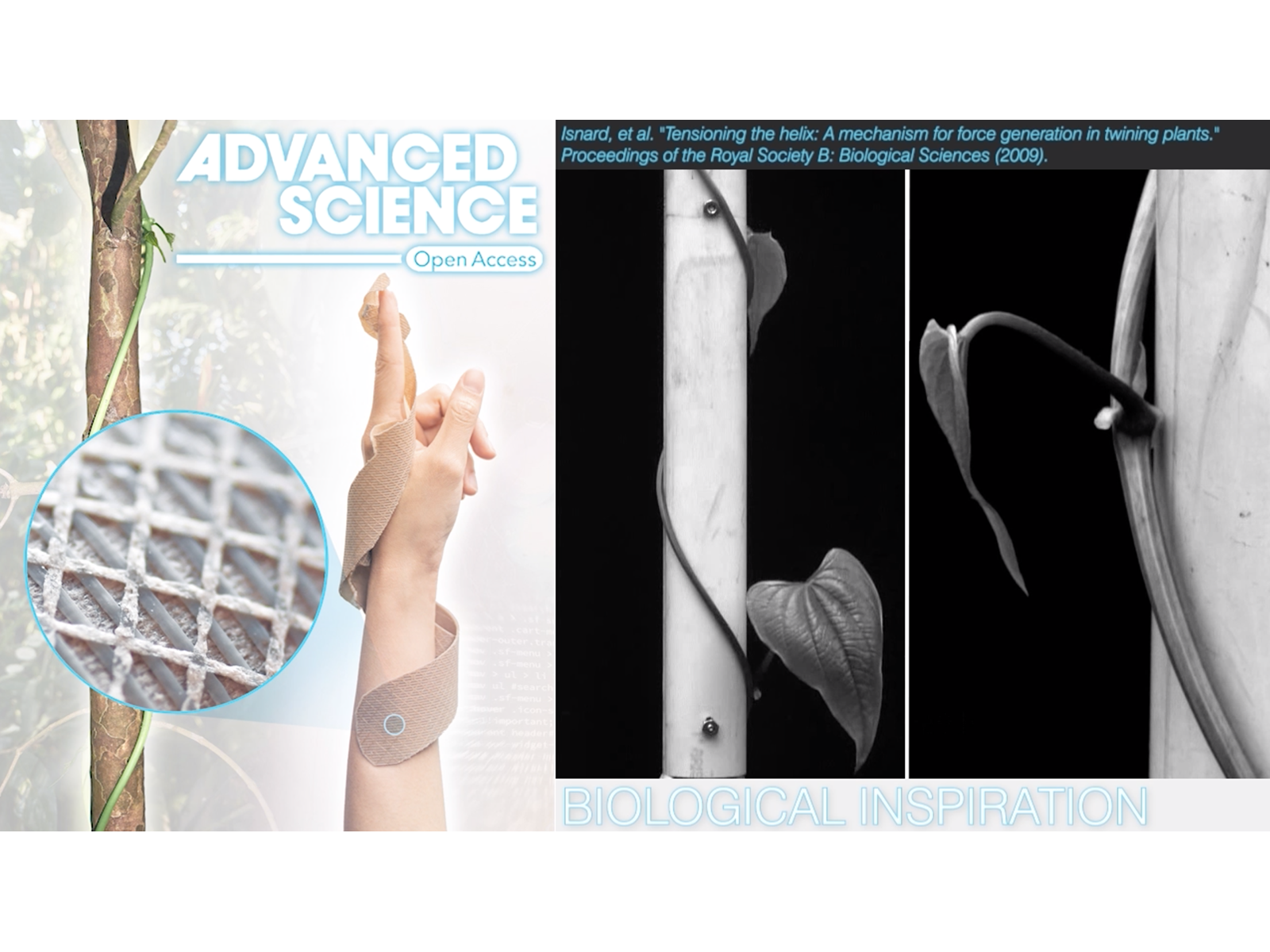We are delighted to announce the release of “Bio‐Inspired Motion Mechanisms: Computational Design and Material Programming of Self‐Adjusting 4D‐Printed Wearable Systems”, which combines insights from plant biomechanics and material programming for the design and 4D-printing of self-tightening adaptive structures.
Many thanks to the collaborators from the Albert-Ludwigs-Universität Freiburg: Freiburg Botanical Garden, Freiburg Material Research Center, Universitätsklinikum Freiburg, Cluster of Excellence “Living, Adaptive and Energy-autonomous Materials Systems”, and the Baden-Württemberg Stiftung!
 Abstract
Abstract
This paper presents a material programming approach for designing 4D-printed self-shaping material systems based on biological role models. Plants have inspired numerous adaptive systems that move without using any operating energy; however, these systems are typically designed and fabricated in the form of simplified bilayers. This work introduces computational design methods for 4D-printing bio-inspired behaviors with compounded mechanisms. To emulate the anisotropic arrangement of motile plant structures, material systems are tailored at the mesoscale using extrusion-based 3D-printing. The methodology is demonstrated by transferring the principle of force generation by a twining plant (Dioscorea bulbifera) to the application of a self-tightening splint. Through the tensioning of its stem helix, D. bulbifera exhibits a squeezing force on its support to provide stability against gravity. The functional strategies of D. bulbifera are abstracted and translated to customized 4D-printed material systems. The squeezing forces of these bio-inspired motion mechanisms are then evaluated. Finally, the function of self-tightening is prototyped in a wrist-forearm splint—a common orthotic device for alignment. The presented approach enables the transfer of novel and expanded biomimetic design strategies to 4D-printed motion mechanisms, further opening the design space to new types of adaptive creations for wearable assistive technologies and beyond.


